
Buddha at Jade Buddha Temple representing meditation and enlightenment
In the middle of one of the most bustling and loud cities in China there still remains one of the most serene and tranquil places anyone can find in any modern city, the Shang Hai Jade Buddha Temple located in the northwest of Shanghai city.
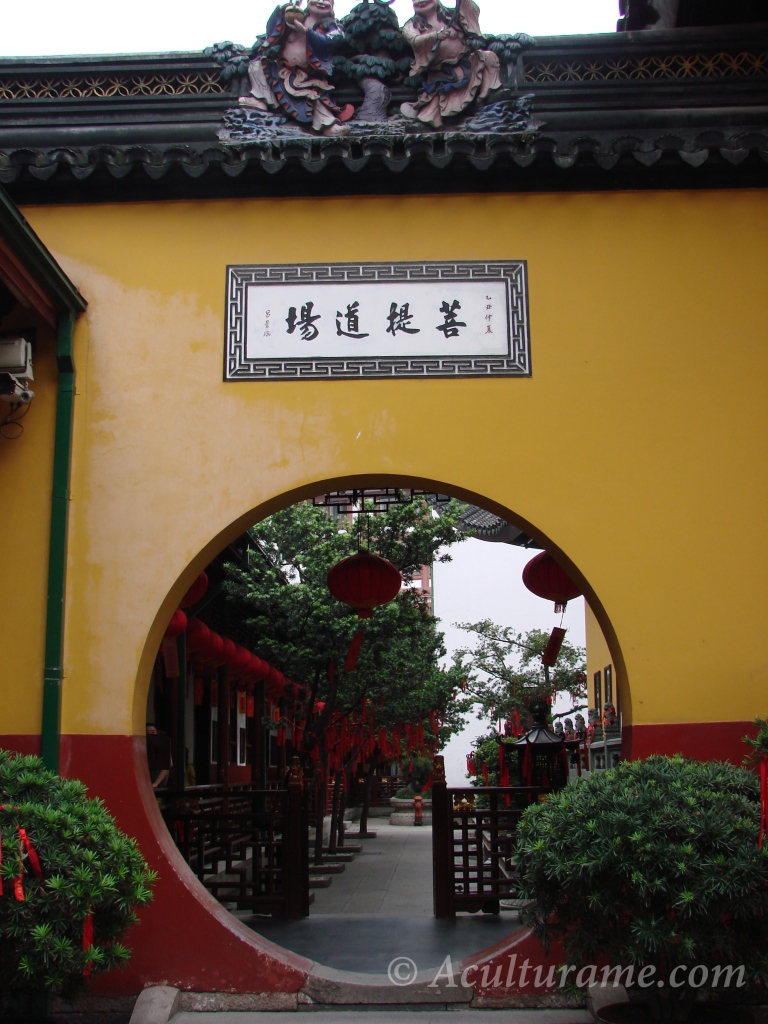
Entrance to Shang Hai Jade Buddha Temple

Shang Hai Jade Buddha Temple
This old temple was founded in 1882 to house two jade Buddha statues, which were brought from Burma (present day Myanmar) by a monk named Hui Gen. One statue is the famous Sitting Buddha (190 centimeters high) and the smaller Reclining or Recumbent Buddha (96 centimeters long). The original temple was destroyed during the revolution that overthrew the Qing Dynasty but the statues were saved. A new temple, named Shang Hai Jade Buddha Temple, was built on the same site in 1928.
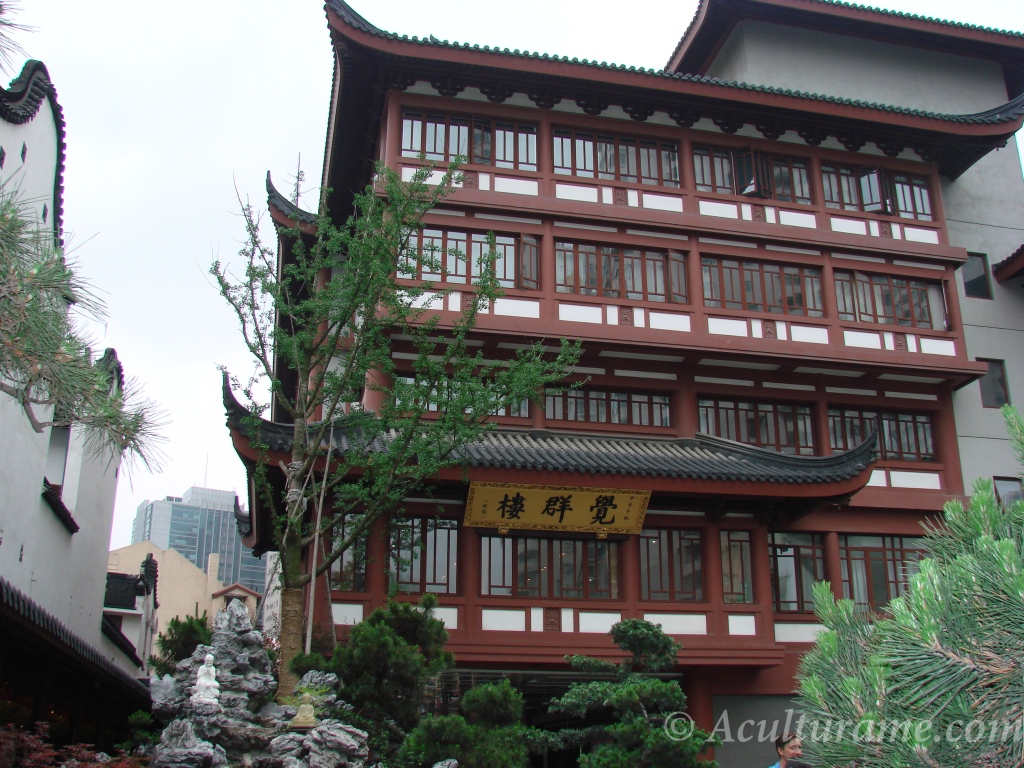
Jade Buddha Temple architecture
Shang Hai Jade Buddha Temple is a place any visitor must see whether Buddhist or not. Anyone looking to learn about Chinese culture, meditate, or just relax away from a noisy, crowded modern city should stop by.
As you enter the Jade Buddha Temple you will immediately be transported to the serenity and tranquility of another world as the smell of juniper incense, which is prevalent in almost all Buddhist temples in China and Tibet, lightly fills the air.
The temple is full of rooms where different Buddhist figures and statues stand in erect posture. The most interesting one was the statue of the Three Golden Buddhas. One Buddha statue is holding a wheel and in another one he is holding a lotus flower. The three of them are sitting down in lotus position representing meditation and enlightenment.
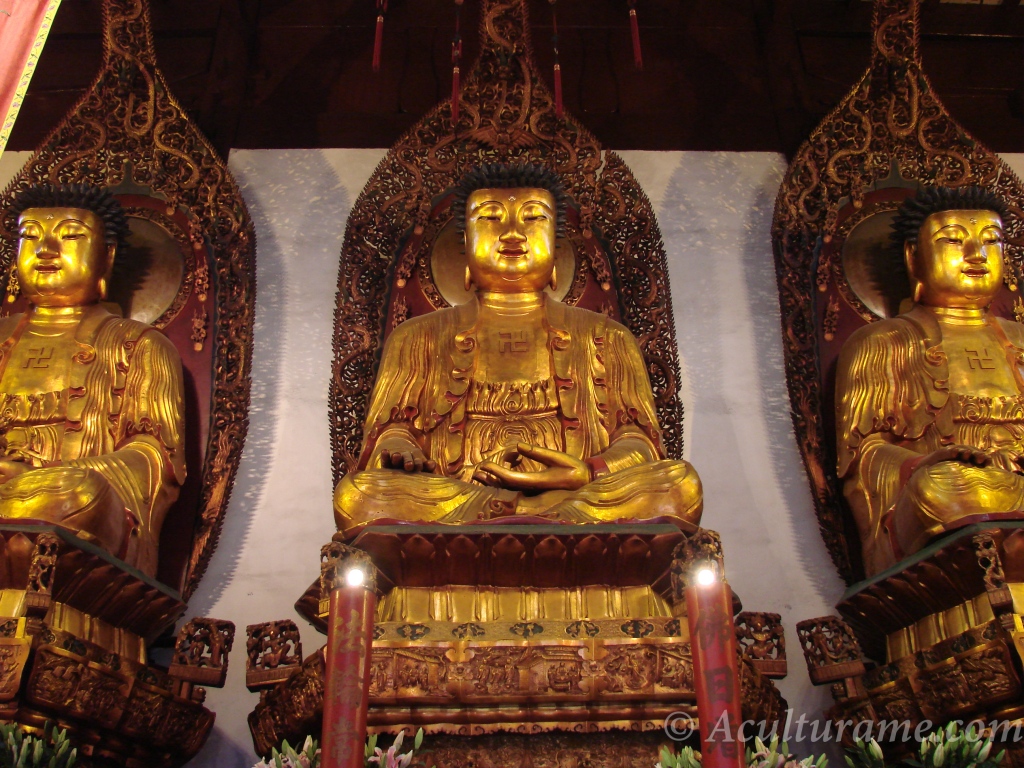
the Three Golden Buddhas the Buddha at the center, Amitabha at the left and Bhaisajyaguru at the right
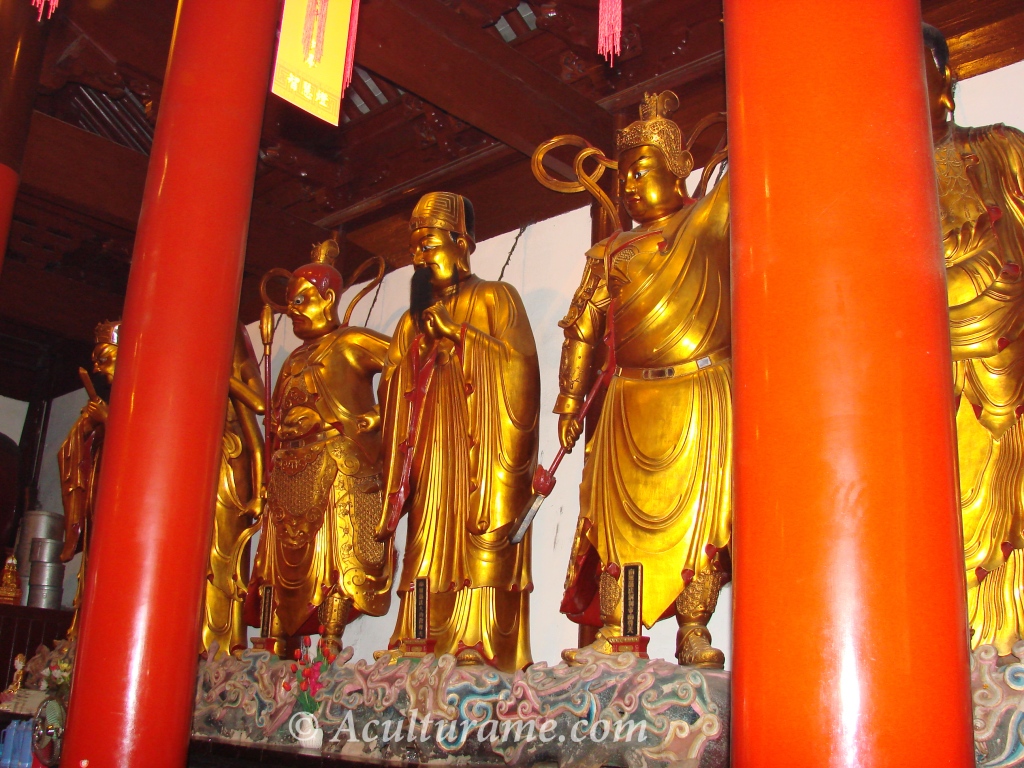
Buddhist figures and statues stand in erect posture

The most unforgettable and impressive moment for me at Jade Buddha Temple was the waterfall found in one of the temple’s main courtyards. Made of stone, this man-made pond with a beautiful waterfall might not be as impressive to some visitors as the tall erect Buddhist statues inside the temple rooms. But to me, this special site made me feel a sense of calmness.
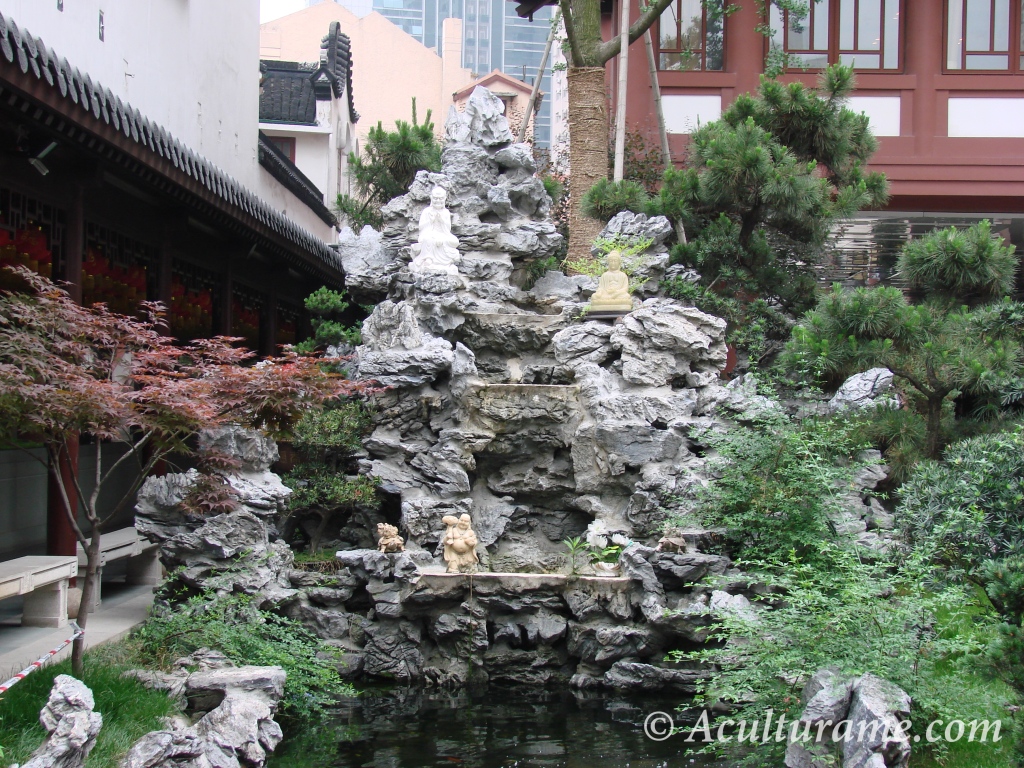
waterfall found in one of the temple’s main courtyards
Perhaps it was the calming sound of the water as it trickled down the waterfall or maybe it was watching the pink, lavender, and yellow water lilies slowly float around propelled by the falling waters or perhaps I was hypnotized by the circular motions of the beautiful koi fish swimming in the pond. There was definitely something special about this waterfall that made the trip to this temple an unforgettable experience.

Koi fish swimming in the pond and water lilies floating

the calming sound of the water instilled a sense of serenity
The temple’s corridors and courtyards reminded me of those I have seen on Chinese movies. I could almost picture Donnie Yen (Chinese martial arts actor) fighting his enemies all throughout the temple. The buildings were wide rather than tall, with slide doors at every entrance; all facing an outside courtyard where traditional incense burners and fireplaces stood close together.
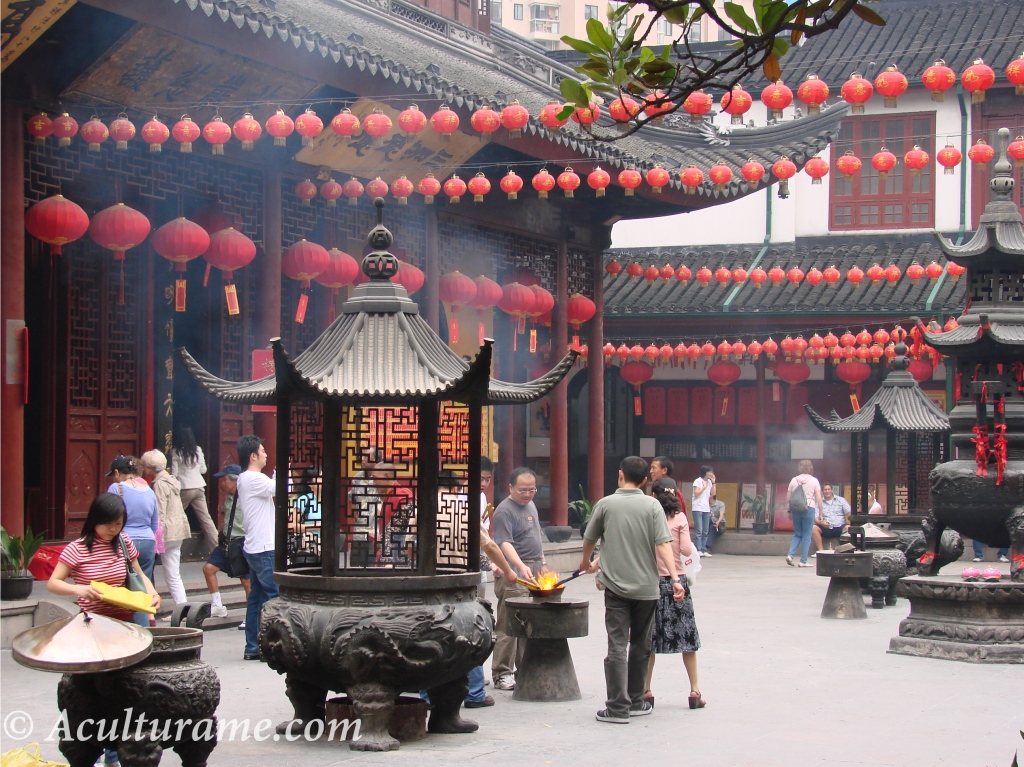
traditional incense burners and fireplaces at Jade Buddha Temple
Buddhism is the third largest religion in China; Chinese religion being the first and Atheism the second largest. Although Buddhism is not the number one religion in China, Buddhism, which was introduced much later, has had a significant role in influencing Chinese culture. Currently, 6.2 percent of the Chinese population practices Chinese Buddhism also known as Mahayana Buddhism. According to history, it is believed that Buddhism was introduced to China in 67 AD during the Han Dynasty from Hotan in Xinjiang to Central China.
With a history that spans over 100 years, Jade Buddha Temple is a great educational sight where anyone can experience Chinese history and Buddhism in Shanghai. It is one of the city’s few active Buddhist monasteries left and a definite must see location for any visitor.
© Lizzeth Montejano and Aculturame, 2012-2019. Unauthorized use and/or duplication of this material without expressed and written permission from this blog’s author and/or owner is strictly prohibited. Excerpts and links may be used, provided that full and clear credit is given to Lizzeth Montejano and Aculturame with appropriate and specific direction to the original content.
If you are interested in any of my work (including pictures, text content, etc.) you can contact me at aculturame@gmail.com
If you would like to request permission to use any of my blog content please contact me at aculturame@gmail.com
Thank you very much for this valuable tour of the beautiful Jade Buddha Temple
I’m glad you enjoyed it Eddie!
Beautiful photographs and interesting post. Perhaps we will get to China at some point as we are after all in the region ( Viet Nam.)
Peta
Hello Peta, thank you for visiting my blog, I highly recommend you to visit this temple if you are visiting in Shanghai China, it’s unforgettable.